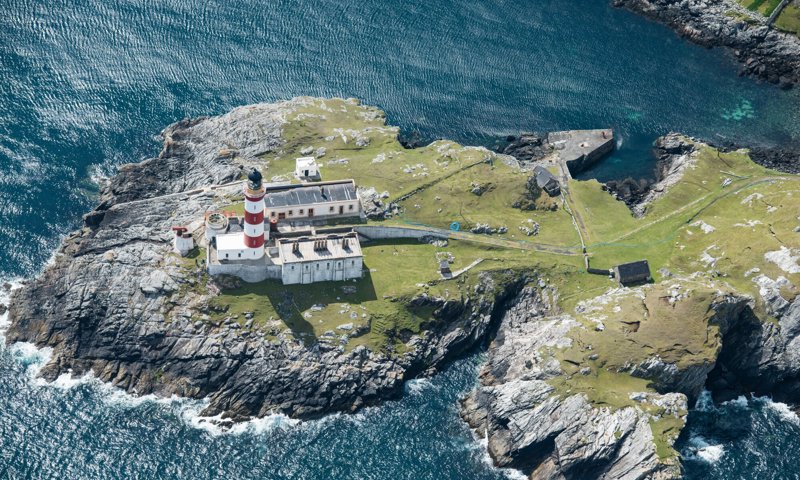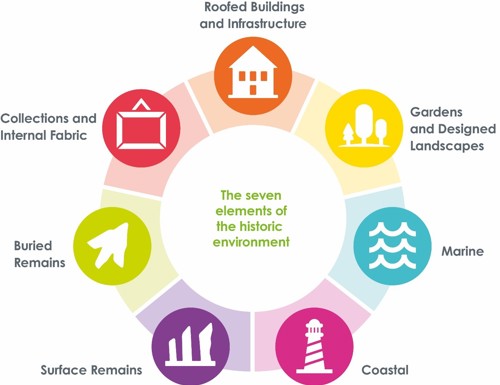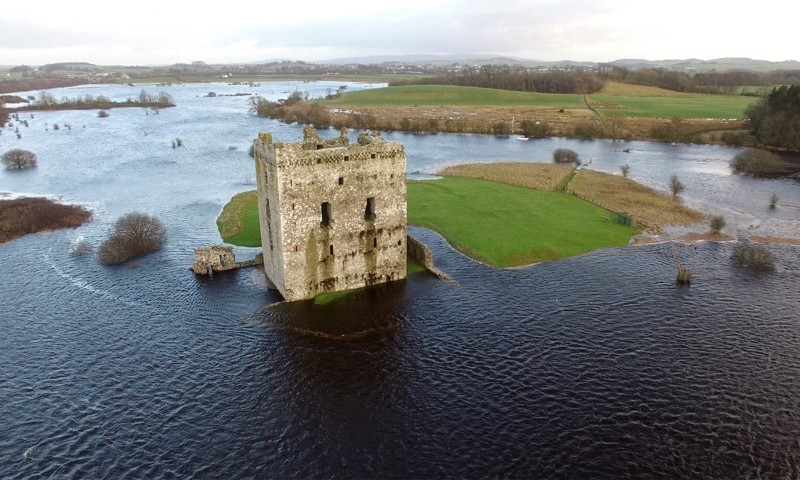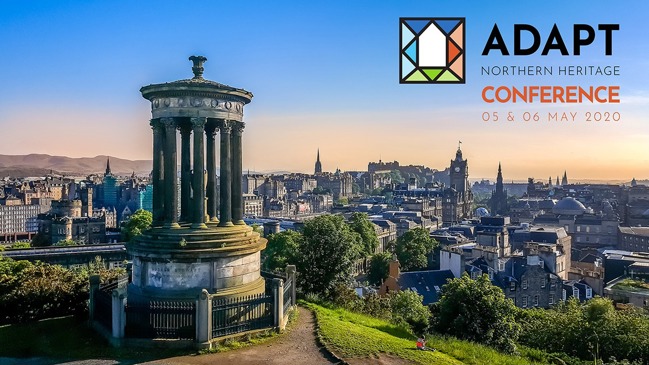1 A Guide to Climate Change

Eilean Glas Lighthouse, Isle of Scalpay.
The importance of recognising climate change and its impacts has never been clearer. The Scottish Government declared a climate emergency in April 2019 and committed to a green recovery from COVID-19 in December 2020, both highlighting the need to assess the impacts of climate change on the historic environment.
A Guide to Climate Change Impacts on Scotland’s Historic Environment is a commitment of the Our Place in Time (OPiT) Climate Change Working Group and is the product of a collaborative sector approach.
As lead of this working group, we brought together sector partners to launch the guide at Glasgow City Chambers in October 2019.
The guide is the product of extensive research and looks at climate change impacts on all aspects of the historic environment, including the climate hazards they face, their vulnerability, and potential adaptation measures that can be applied.

It identifies seven elements outlining the features that can increase the resilience or vulnerability of a historic site:
- roofed buildings and infrastructure
- gardens and designed landscapes
- marine
- coastal
- surface remains
- buried remains
- collections and internal fabrics
The guide places Scotland’s historic environment at the heart of climate action, and aims to promote cooperation across all sectors of society.
Our Place in Time was Scotland’s strategy for the historic environment, developed collaboratively by organisations and specialists in the historic environment sector and beyond. In June 2023, we updated this national strategy and released Our Past, Our Future.
Find out more about this new strategy for Scotland's historic environment.
2 Adapt Northern Heritage

The Tower House of Threave Castle, a project case study site, enclosed by water which has reached and submerged the castle walls, due to the flooding of the River Dee.
Adapt Northern Heritage was a collaborative research project supporting communities and local authorities in the North Atlantic region to adapt their cultural heritage to the environmental impacts of climate change and its associated hazards.
This was achieved through community engagement and informed conservation planning. We were one of four project partners, along with the following organisations:
- Minjastofnun Íslands (the Cultural Heritage Agency of Iceland)
- Norsk institutt for kulturminneforskning (Norwegian Institute for Cultural Heritage Research)
- Riksantikvaren (Norway's Directorate for Cultural Heritage)
The project had identified the following objectives:
Objective 1 - Assessment tool and adaptation guidance
Develop procedures for risks and vulnerabilities assessments and sustainable adaptation planning of historic places and make the procedures accessible online.
Objective 2 Demonstration case studies
Produce adaptation action plans to demonstrate how the environmental impacts of climate change and associated natural hazards can be integrated into conservation planning.
Objective 3 Community network
Create a network for stakeholders concerned with the conservation of northern cultural heritage in the context of a changing climate to contribute, engage, learn and network.
The project developed a tool to assess the risks for and vulnerabilities of historic places and provide guidance for the planning of strategic adaption measures that takes into account cultural, economic, environmental and social sustainability.
The tool was developed, tested and demonstrated in nine case studies, in Iceland, Ireland, Norway, Russia, Sweden and Scotland, for which adaptation actions plans will be produced. The project has also created a community network with a networking platform, round table workshops and training events.

Adapt Northern Heritage Conference
This conference took place online from 5 to 6 May 2020 and explored, in parallel sessions through peer-reviewed presentations, the practices and research concerned with:
- assessing the environmental impacts of climate change on, and associated risks to, historic places
- planning and/or implementing adaptation measures to make historic places more resilient to, or manage their loss because of, climate change
The conference abstracts are freely available online, as part of the project’s toolkit, and the presentations can be viewed as recorded Facebook Livestreams.
